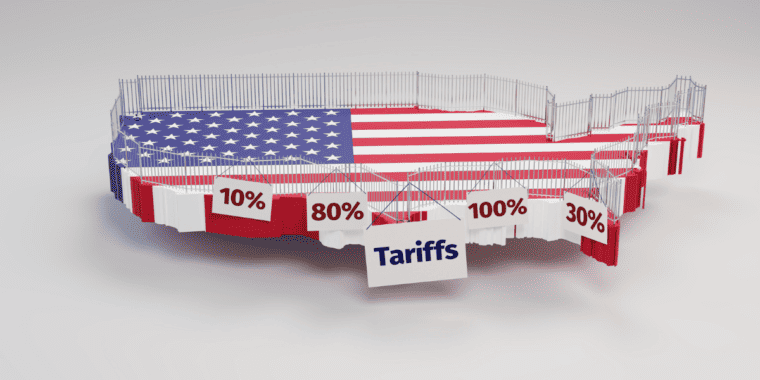
The current US administration under Trump has threatened the European Union (EU) with a 200% tariff on spirits and wine coming to America from the EU. This is in response to the EU having a tariff on certain American spirits going to the EU, which in turn is a response to the US putting a tariff on all EU steel and aluminium imports to the US. What are the potential implications for alcohol consumption and alcohol-related harm? Given the erratic decision-making in Washington, it is risky to predict if and when this will happen or what the implications will be. However, here are some reflections, with the caveat that they may be largely irrelevant as the fundamentals can change very quickly in this hostile and fluid climate.
Impact in the US
Wine and spirits from the 27-nation EU represent 17% of the total alcohol consumed in the US in 2023. With a 200% tariff we expect there will be a dramatic decline in EU alcoholic beverages being sold in the US for as long as tariffs at this level remain in place. It is likely that a mere fraction of current consumers of these products in the US will buy them once the tariffs are implemented and enforced. There will likely be a switch to products from the US or from other countries that have not had such high tariffs imposed. There could also be a transient decrease in prices in the US as US alcohol exporters may seek to dump cheap products on local markets to make up some of their losses from declining access to EU markets. The temporary decline in prices could contribute to an increase in related harm as shown by numerous studies showing a relationship between lower alcohol prices and an increase in alcohol-related impacts on chronic disease, trauma and social problems. However, if a continuing trade war triggers a recession, then a reduction in disposable income would subsequently contribute to a decline in per capita alcohol consumption and related harm.
Impact on the EU
About 32% of EU spirits and wine are sold in the US. A 200% tariff will likely dry up most of this market with serious consequences to producers, and related industries. Steps will likely be taken by exporters to store products until the tariff is over, a strategy that will work for longer for wine and spirits than for beer, which has a relatively short shelf-life. Markets in other countries, not the US, will likely be sought. Also, there may be initiatives to reduce the price on alcohol in order to sell some of the surplus within the EU, rather than in the US. Reduced prices will contribute to increased consumption and, in turn, to a higher risk of an increase in alcohol-related harm. If there is a recession in the EU, then overall alcohol consumption is expected to decline, even if some heavy drinkers respond by drinking more.
Therefore, one impact is that, in the short-term at least, alcohol-related harms could increase both in the US and in the EU.
The larger picture
Outside the US administration there are mixed assessments of the proposed or implemented tariffs on many products, including alcohol. It is not clear that they will generate the wealth predicted. For example, it may take some years to stimulate wine production in the US, which typically takes several years to go from planting vines to producing finished products.
Tariffs have also generated ill will. For example, many Canadians feel betrayed by their US neighbour and long-time partner as a result of insults to our leaders, threats to Canada’s sovereignty, and tariffs on Canadian products coming to the US. Currently the information is sketchy and uncertain, and changing almost daily, contributing to anxiety and fear. It is unlikely that there are any winners from a trade war and likely many losers.
Dr Norman Giesbrecht, Centre for Addiction and Mental Health and Professor Tim Stockwell, University of Victoria, Canada.
All IAS Blogposts are published with the permission of the author. The views expressed are solely the author’s own and do not necessarily represent the views of the Institute of Alcohol Studies.
